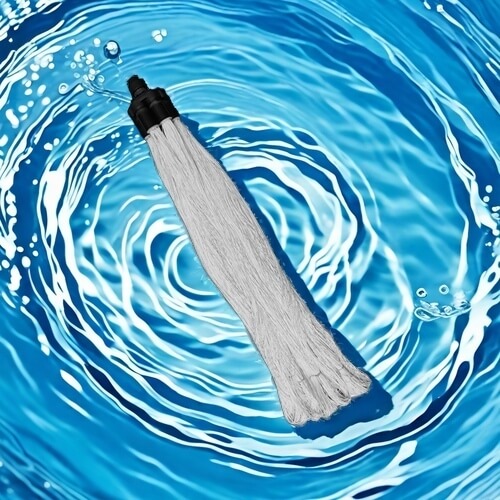What is the material of Mabr film
Mabr membrane is a new type of membrane material widely used in the fields of water treatment and wastewater treatment. Its unique physical and chemical properties make it outstanding in improving water treatment efficiency. The article will elaborate on the material of Mabr film from six aspects, including its basic composition, physical properties, chemical stability, application fields, manufacturing processes, and future research directions.
Basic Composition
The MABR membrane (membrane aerated biofilm reactor) is mainly made of polymer composite materials. Specifically, commonly used materials include semi hydrophobic polymers such as polyvinylidene fluoride (PVDF) and polyester (PET) supported mesh tubes. These materials have good hydrophilicity and high strength, which can support the growth of biofilms and achieve efficient oxygen transfer
Functional fillers are a key component of Mabr membranes, enhancing their selectivity and permeability. These fillers can be inorganic materials such as silica (SiO2) or organic materials such as activated carbon, which can effectively improve the filtration performance of the membrane.
By surface modification, the anti fouling ability of the membrane can be improved, thereby extending its service life.
physical characteristics
The physical properties of Mabr membrane are mainly reflected in its pore size distribution and permeability. The pore size of Mabr membrane is usually at the nanometer level, which enables it to effectively filter out small particles and pollutants in water. By controlling the pore size of the membrane, selective separation of different substances can be achieved.
High permeability means that under the same pressure, the membrane can pass through the liquid faster, thereby improving the efficiency of water treatment. This is particularly important for large-scale water treatment facilities.

chemical stability
Mabr films are usually made of corrosion-resistant polymer materials that can resist the erosion of various chemical substances. This enables it to maintain good performance when treating wastewater containing chemical pollutants.
It also performs well in high temperature and acid-base environments. Many traditional membranes are prone to degradation under extreme conditions, while Mabr membranes can maintain stable structure and performance, adapting to more complex water treatment needs.
Its material can resist the erosion of oxidants, extend the service life of the membrane, and reduce maintenance costs.
application area
The application fields are very extensive, mainly including urban sewage treatment, industrial wastewater treatment, and seawater desalination. With the increasing awareness of environmental protection, the application of Mabr membrane in urban sewage treatment is receiving more and more attention.
In industrial wastewater treatment, Mabr membrane can effectively remove heavy metals and organic pollutants, meeting increasingly strict discharge standards. Its application in seawater desalination also shows promising prospects, providing reliable water sources for water scarce areas.
With the continuous advancement of technology, the application fields of Mabr membranes are still expanding.
manufacturing process
Common manufacturing methods include phase transformation, solution casting, and electrospinning. These methods have their own characteristics and can produce membranes with different properties.
Phase transformation method is a commonly used membrane preparation technique that forms the microstructure of membranes by controlling the evaporation of solvents and phase separation. This method can effectively control the pore size and thickness of the membrane, improving its selectivity.
Electrospinning is an emerging membrane preparation technology that stretches polymer solutions into fine fibers through the action of an electric field, forming membranes with a high specific surface area. This technology has shown great potential in improving membrane permeability and anti fouling ability.
Future research directions
In the future, research on Mabr membranes will mainly focus on improving membrane performance and reducing production costs. Researchers are exploring the application of new materials to further enhance the selectivity and permeability of membranes.
The anti fouling ability of membranes is also an important research direction. Through surface modification and functionalization, researchers hope to develop more pollution resistant Mabr membranes to adapt to complex water treatment environments.
By optimizing the use and maintenance of membranes, reducing resource consumption, and achieving sustainable development.
Mabr membrane is a new type of membrane material with excellent performance, and its unique properties make it widely applicable in the field of water treatment. By analyzing the basic composition, physical properties, chemical stability, application fields, manufacturing processes, and future research directions of Mabr membranes, we can gain a deeper understanding of their importance. With the continuous advancement of technology, the application prospects of Mabr membranes will become even broader.
